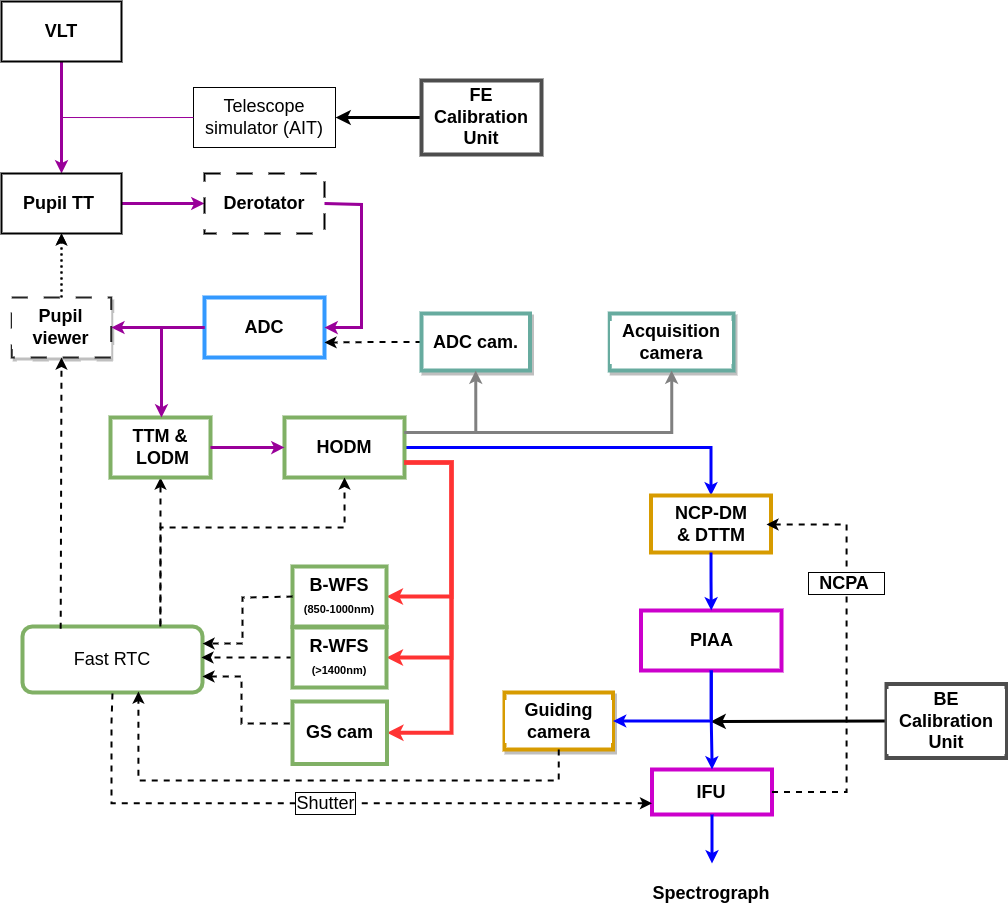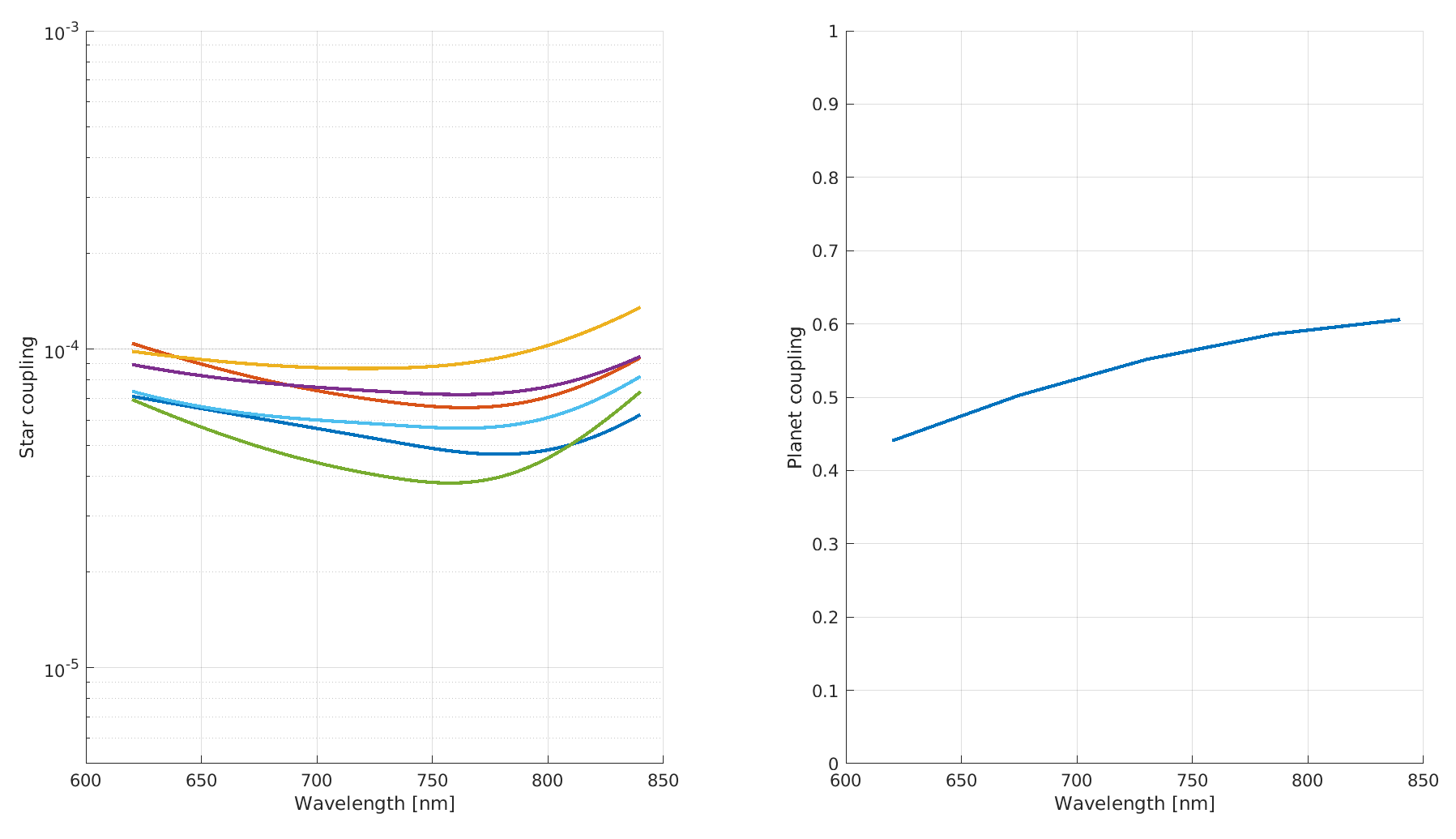Front End #
Overview #
The role of the Front-End is to collect the light of the VLT and to deliver it to the Fiber Link, connecting the Front-End to the spectrograph. Its objectives are to:
- Couple at least 50% of the planet light into one of six fibers surrounding the star;
- Avoid to the maximum stellar contamination on those fibers, which translates in reaching high contrast level <2.10-4 at the fiber level.
Many challenges are facing the Front-End because it is ground-based, works in the visible and the planet is at only 2 diffraction-limit elements from the star (nearly as close as it is theoretically possible to observe it). Mostly 2 sub-systems will help reach such goals, namely the Coronagraphic Integral Field Unit (C-IFU) and the eXtreme Adaptive Optics system (XAO). Other identified systems can be seen in the preliminary Front-End functionnal scheme shown below.

End-to-end simulations demonstrate that, under median Paranal conditions (0.75" seeing, 9.5m/s wind speed, 52° elevation), RISTRETTO would reach the desired performance, with some margin.

The coronagraphic IFU #
The IFU samples the focal plane with 7 hexagonal spaxels. Each spaxel is made of an hexagonal lenslet that focus light onto a Single-Mode Fiber (SMF). 1 spaxel is centered on the star and is surrounded by a ring of 6 others, at a radius of 37 milli-arcsecond (mas), where should be (hopefully) a planet. Its peculiarity resides in the use of SMF that whose mode is unique and of a fixed gaussian shape. Their field-of-view is therefore gaussian as well, so that the IFU presents blind spots between hexagones. The position angle of the planet being a priori unknown, rotating the IFU by 30° is therefore required to uniformize its transmssion.
Becasue of this unique mode, not every photons is allowed into the fiber. For a photon to enter the fiber, its corresponding electric-field must be gaussian. Any deviation reduces coupling into the fiber. The challenge of the coronagraphic IFU is to make the planet look as close as possible to the fiber mode, while making the star as far as possible so that it is not coupled to the fiber. This is what is commonly called a “nuller” device.
Several such solutions were proposed in the past, but they all suffer from rather low transmission (and even unacceptibly low when considering several days on integration time on a VLT!). For RISTRETTO, we developped a nealry optimal solution, based on a Phase Induced Amplitude Apodizer (PIAA; Guyon et al. 2003). The PIAA is an optics that reshapes top-hat telescope illumination into a gaussian one, while preserving transmission and spatial resolution. A perfect match to the SMF to improve coupling! It is however very complex to manufacture. We reoptimized the original solution to improve its manufacturability, and converged to a partially diffractive solution that enables nulling over the IFU, which we call PIAA-nuller (PIAAN). We end up with a system increasing contrast and transmission at the same time!
The PIAAN concept is currently in prototyping phase.


XAO System #
In order to obtain the required performances, one need an XAO system working in the Visible. Given the brightness of the target it is possible to make an AO system with a wavefron sensor in the infrared while keeping the visible light for the science.
The current design is to make a woofer tweeter system:
- LODM: 11x11 actuator,
- HODM: >= 40x40 actuator.
The main wavefront sensor will be pyramid wavefront sensor (possibly unmodulated) in the infrared. A second finer wavefront sensor (possibly Zernicke), also sensitive to phase discontinuities closer to the science band. It is also clear that a low order deformable mirror is necessary in the science band to tackle the NCPA.